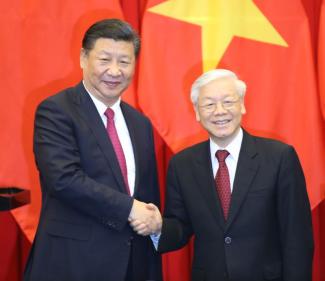New Silk Road
Clean at home, dirty abroad

At home, China is building less coal-fired power plants and increasingly using cleaner and more efficient technologies. Meanwhile, Chinese companies massively invest in – mostly outdated – coal power abroad. China sees a huge market in the countries covered by its Belt and Road Initiative (BRI), a huge infrastructure investment scheme (see D+C/E+Z e-Paper 2017/10, p. 8).
As Jiahai Yuan, professor at the North China Electric Power University in Beijing said at the world climate conference in Bonn in November, masses of people in these countries still lack access to electricity: “Consumption is very low, so the growth potential is huge.” Renewable energies should be prioritised, according to him. However, “green coal power has a big potential to make improvements too,” he argues.
Officially, the BRI is geared to sustainability. In September 2016, the “Belt and Road Green Development Partnership” was launched to provide policy recommendations, involving Chinese and international think tanks as well as environmental NGOs and foundations. The idea is to achieve the UN Sustainable Development Goals as well as the nationally determined contributions (NDCs) to the Paris Agreement, says Guo Hongyu of the Chinese environmental NGO Greenovation Hub.
The reality is different, however. China’s investments in the energy sector do not focus on renewables, but on coal. According to the recent study “Silk road bottom up”, published by the independent German foundation Asienhaus and the non-profit organisation Chinadialogue, 65 % of Chinese banks’ funds go to coal-fired power plants, while only one percent is invested in wind power. China accounted for 40 % of public financing for coal projects around the world between 2007 and 2013.
The Asian BRI countries are of special interest. The study states that, at the end of 2016, China was involved in 240 coal-power projects in 25 BRI countries, with a total installed capacity of 251 Gigawatt. Moreover, Chinese companies have announced intentions to build or operate at least 92 additional coal-fired power plants in 27 countries. The majority of these power plants use out-dated technology, making them less efficient than they could be. The Asienhaus/Chinadialogue study argues that official Chinese documents, guidelines and statements regarding the BRI reveal that infrastructure investments are rarely done based on a strategic environmental assessment (SEA) or environmental impact assessment (EIA).
Compounding the problems, Chinese companies and banks only have to adhere to the laws and regulations of the host countries. Those standards tend to be quite low.
One BRI country that is rapidly increasing the use of coal power is Vietnam. Chinese money and technology are making it happen. Vietnam itself lacks the funds for financing this kind of infrastructure development. According to Nguyen Tuan Anh of the Ministry of Planning and Investment, Vietnam needs $ 148 billion from 2016 to 2030, with 75 % required for power plants and 25 % for expanding the grid. “Chinese investors are mainly interested in coal,” Nguyen confirms.
While the big neighbour’s engagement is generally welcome, it carries some risks. Vietnam is set to become more dependent economically and may be unable to control flows of Chinese workers. Moreover, the Asienhaus/Chinadialogue study points out bad experiences in the past. Projects run by Chinese companies were often marked by low quality, slow implementation, huge environmental damages and poor safety measures which resulted in many accidents. Moreover, costs often soared beyond what was initially planned.
Link
China Programme/Stiftung Asienhaus, Chinadialogue (eds.): Silk road bottom up. Regional perspectives on the “Belt and Road Initiative”.
https://www.asienhaus.de/uploads/tx_news/Broschuere_Silk_Road_Bottom-Up_2017.pdf








